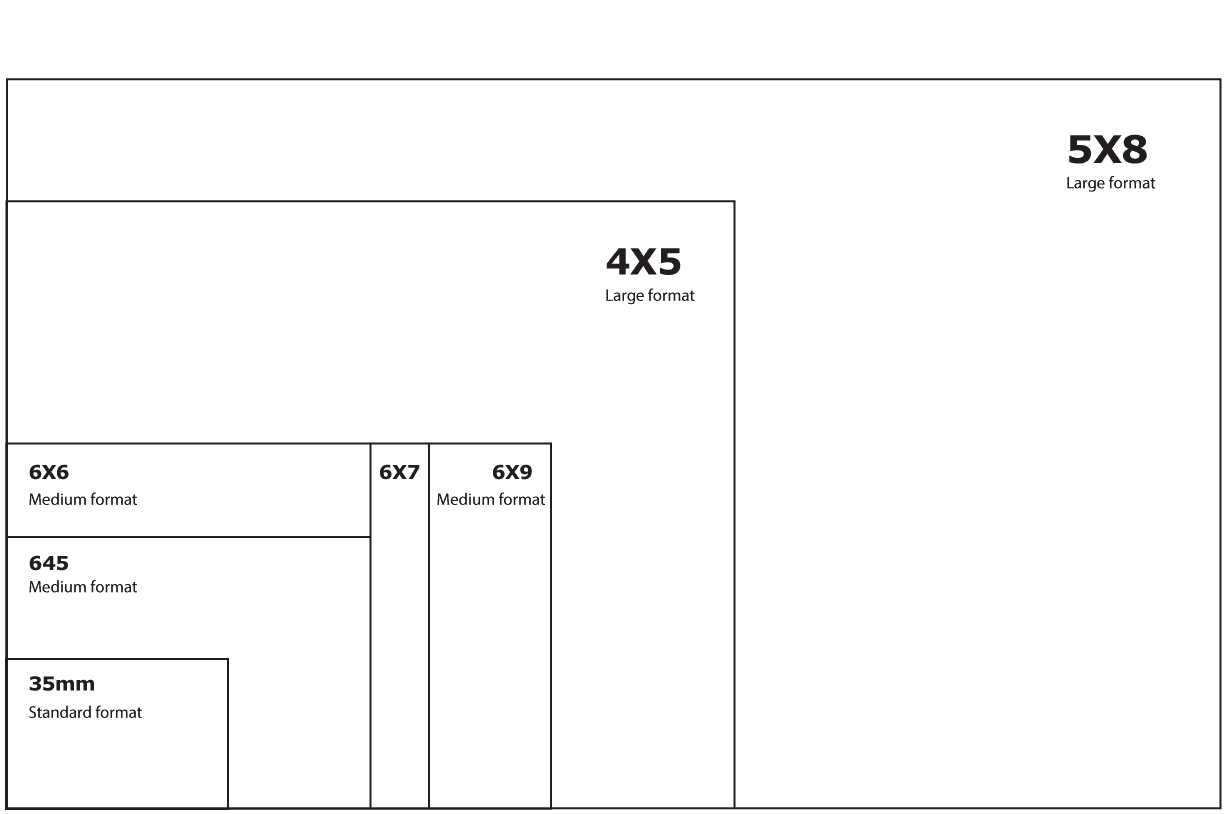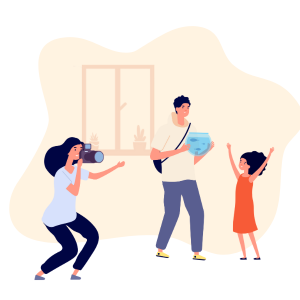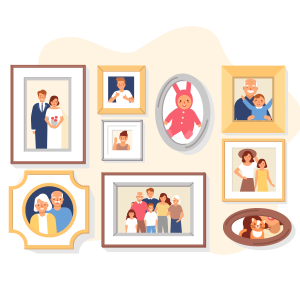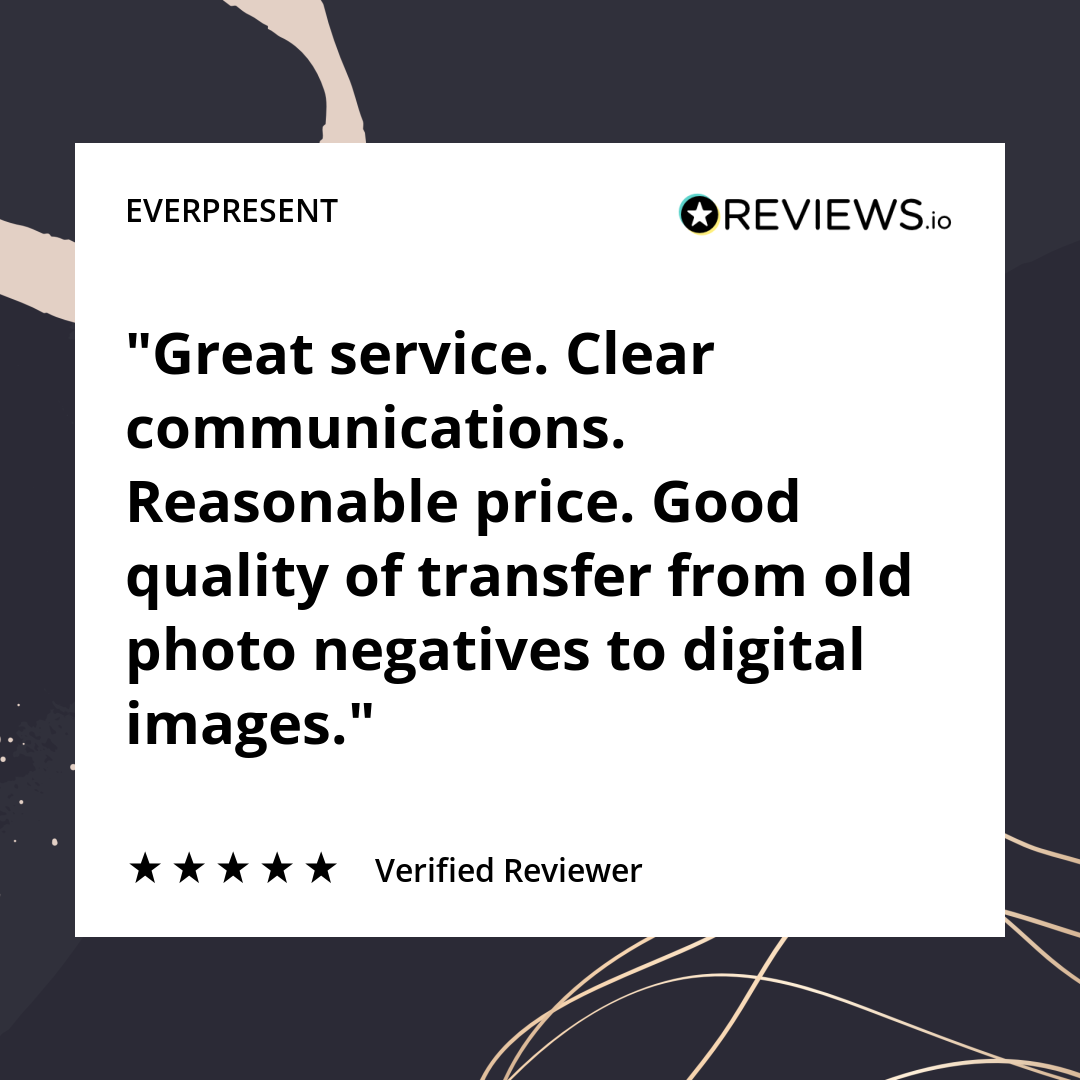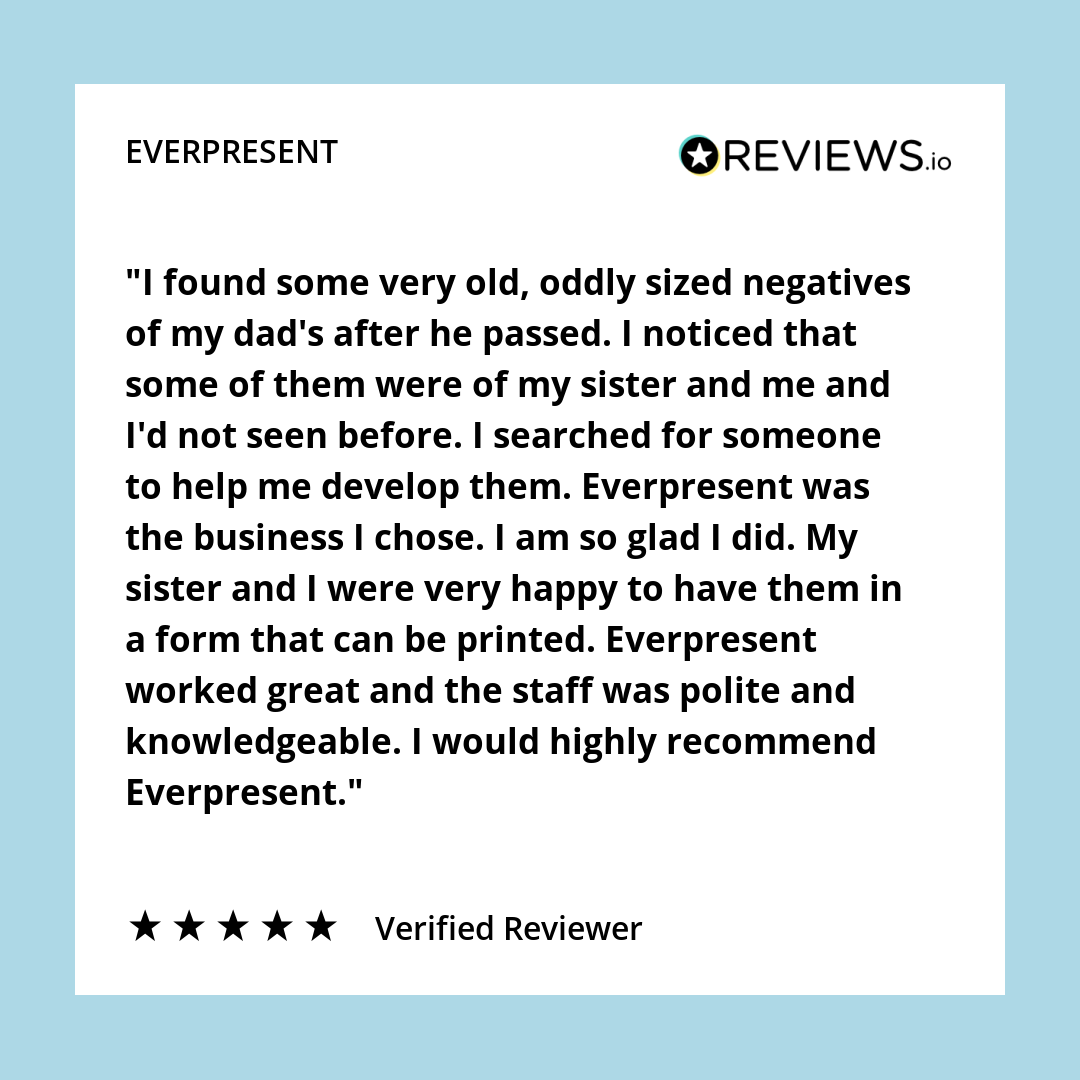DIGITIZE NEGATIVES WITH OUR RENOWNED SCANNING TEAM
WE SCAN NEGATIVES TO DIGITAL
Our technicians digitize millions of negatives every year and we take special pride in our negative scanning service. Our scans are exquisite, whether you select our basic or advanced level of service. We hope you enjoy the convenience of our 50+ locations, home pickups, or our mail-in services. Our family-run business appreciates your thinking of us, and we will treat your project like our own.
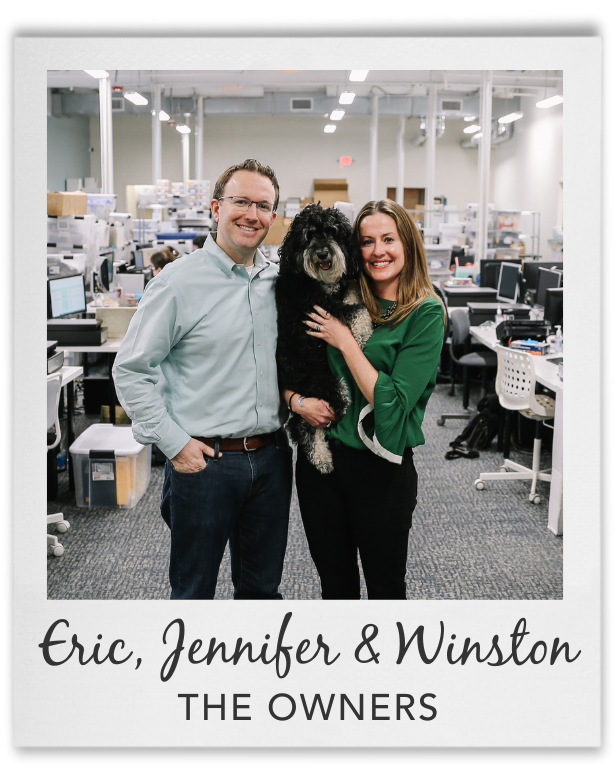

“By making the hard work of digitizing and sharing easy for our clients, we will preserve our world’s history before old formats fade and family stories are lost to time. Our ultimate goal is to make your best memories EverPresent in your life.”
IT’S FREE & EASY TO USE OUR NEGATIVE SCANNING SERVICE
HOME PICKUPS
Too many boxes to move on your own? Complimentary home and office pickups are offered throughout the Northeast for projects over $300.
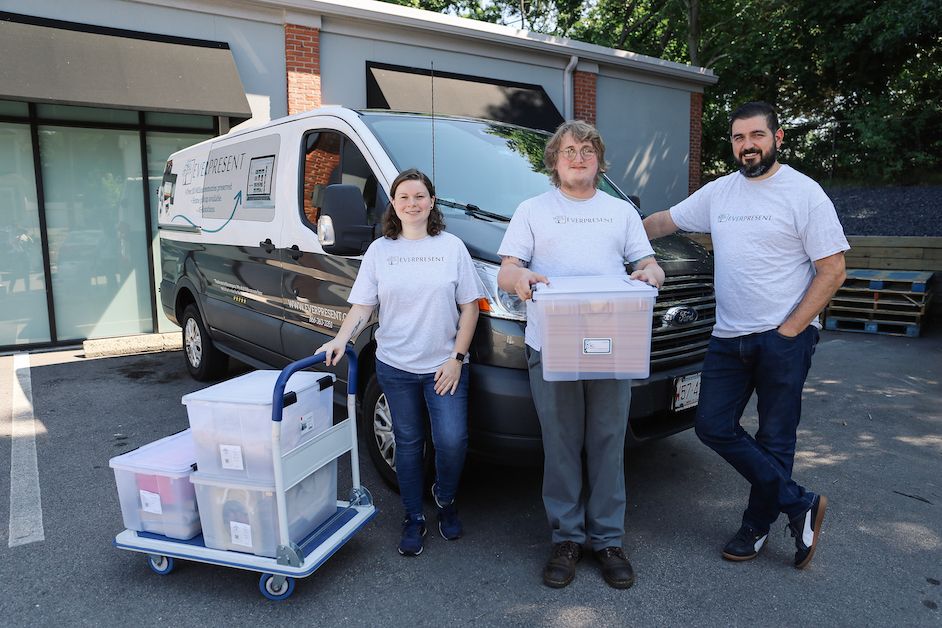
LOCAL DROP OFFS - 60+ LOCATIONS
All readily available for convenient drop-off. See which store is closest to you. Our drivers personally transport projects to our local lab for digitizing.
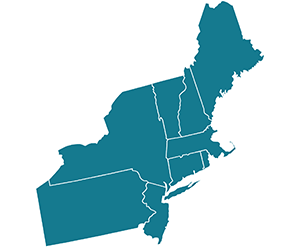
FREE SHIPPING
We accept mail-in orders from across the U.S. We’ll email a pre-paid UPS label or apply a shipping credit if you ship on your own.
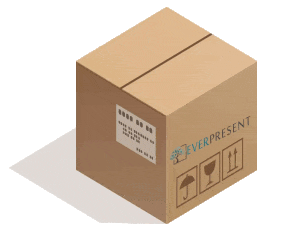
There’s no prep required to get the ball rolling
A lot of folks worry they have to organize, count, bag, and tag their negatives before reaching out. You don’t! We can take care of all of that. Plus, we’d love to hear from you even if all you’re looking for at the moment is some advice about converting negatives to digital photos.
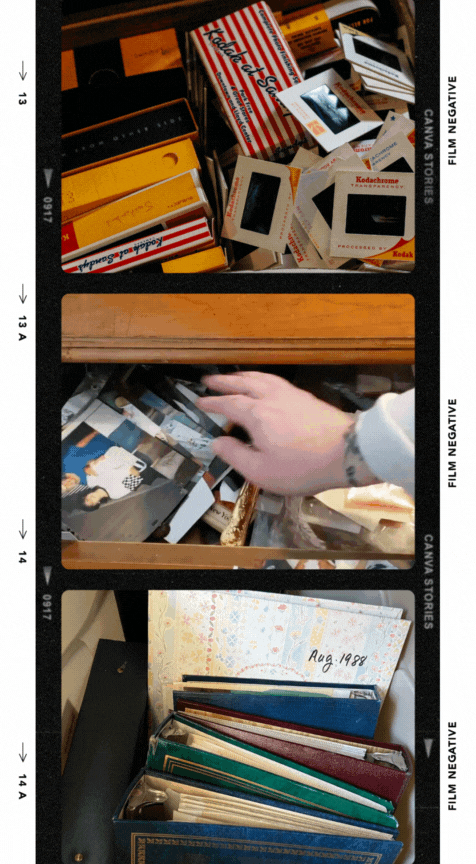
- You don’t have to count your items in advance.
- You don’t have to know exactly what formats you have.
- Your organization stays intact, we’ll maintain whatever you give us.
- We handle projects of all sizes; from handfuls of negatives to tens of thousands of films!
Wherever you are in the process
we’re here to help
with a free, no-obligation estimate.
WHY CHOOSE EVERPRESENT’S FILM NEGATIVE SCANNING SERVICE
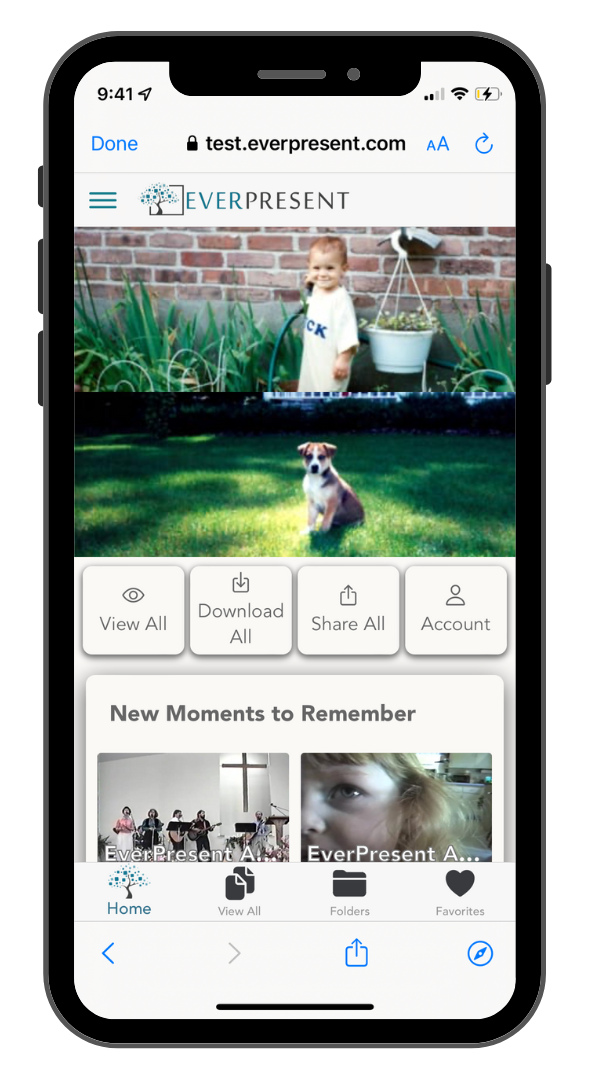
- More for less: The size of our company allows us to provide you with a better value service. Our digital negatives are higher quality and better organized — and we offer an array of advanced digitizing services you won’t find anywhere else. Enjoy a free consultation with our experts to guide you to the best scanning options.
- Ease of service: Thanks to our home and office pickups, more than 50 local stores, and easy shipping options, we’re the most convenient negative scanning service near you. And, unlike other companies, we also handle negatives and other keepsakes as is, and we embrace tedious work like transcribing written captions so you don’t have to.
- 30 years experience: You can trust us to digitize your negatives. Thanks to our highly skilled 80+ technicians, we’ve preserved more than 50 million memories at our alarmed, sprinklered, camera-monitored, US-based, high-tech labs. We also offer advanced barcode tracking and email technology to keep you updated every step of the way.
- Respect: No upfront payments and no rushed decisions. We never ask you to do work to make our job easier. Feel free to send the negatives you want digitizing in their original envelopes, albums, or boxes. We’ll count them for you, provide a no-obligation estimate, and keep everything in order.





